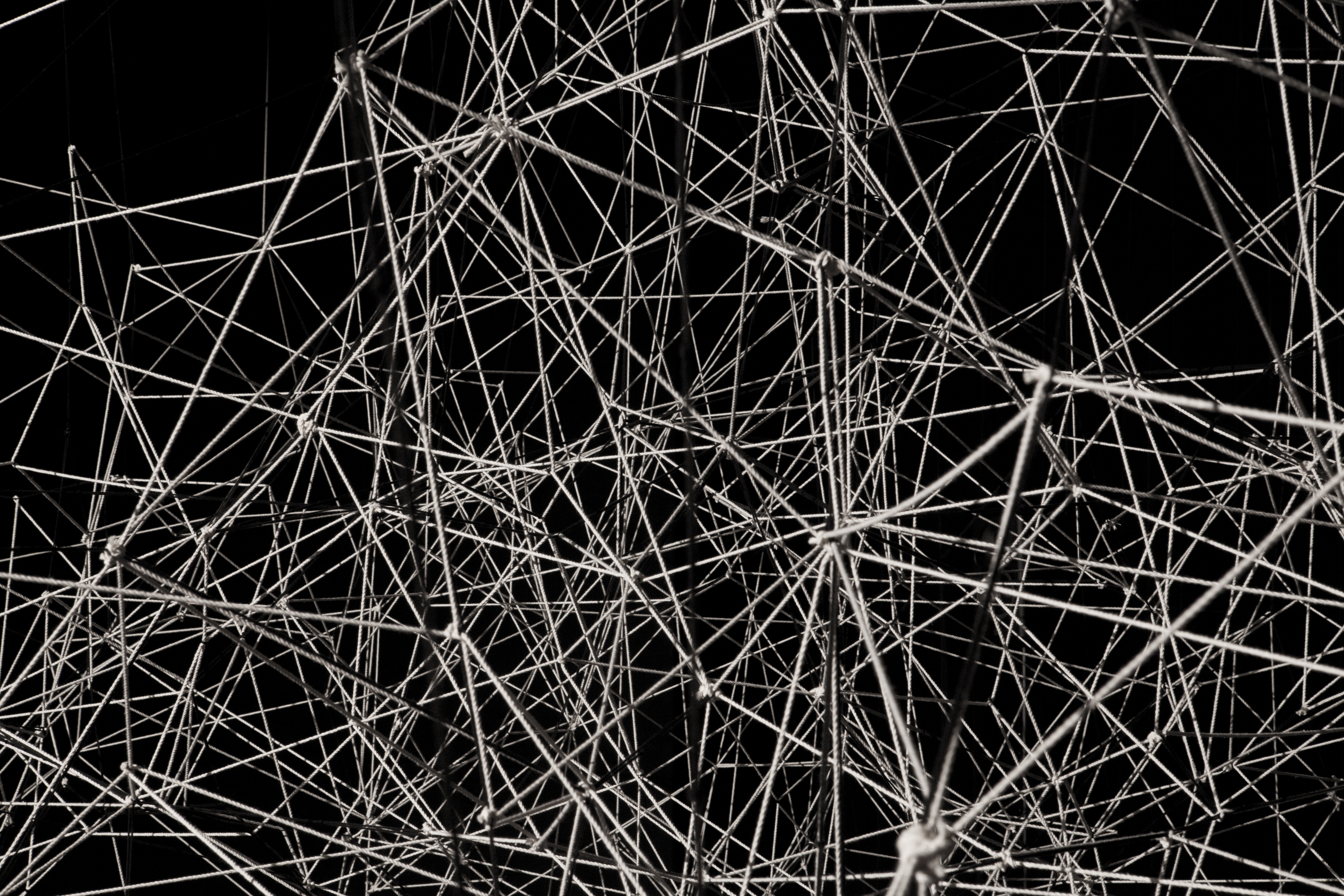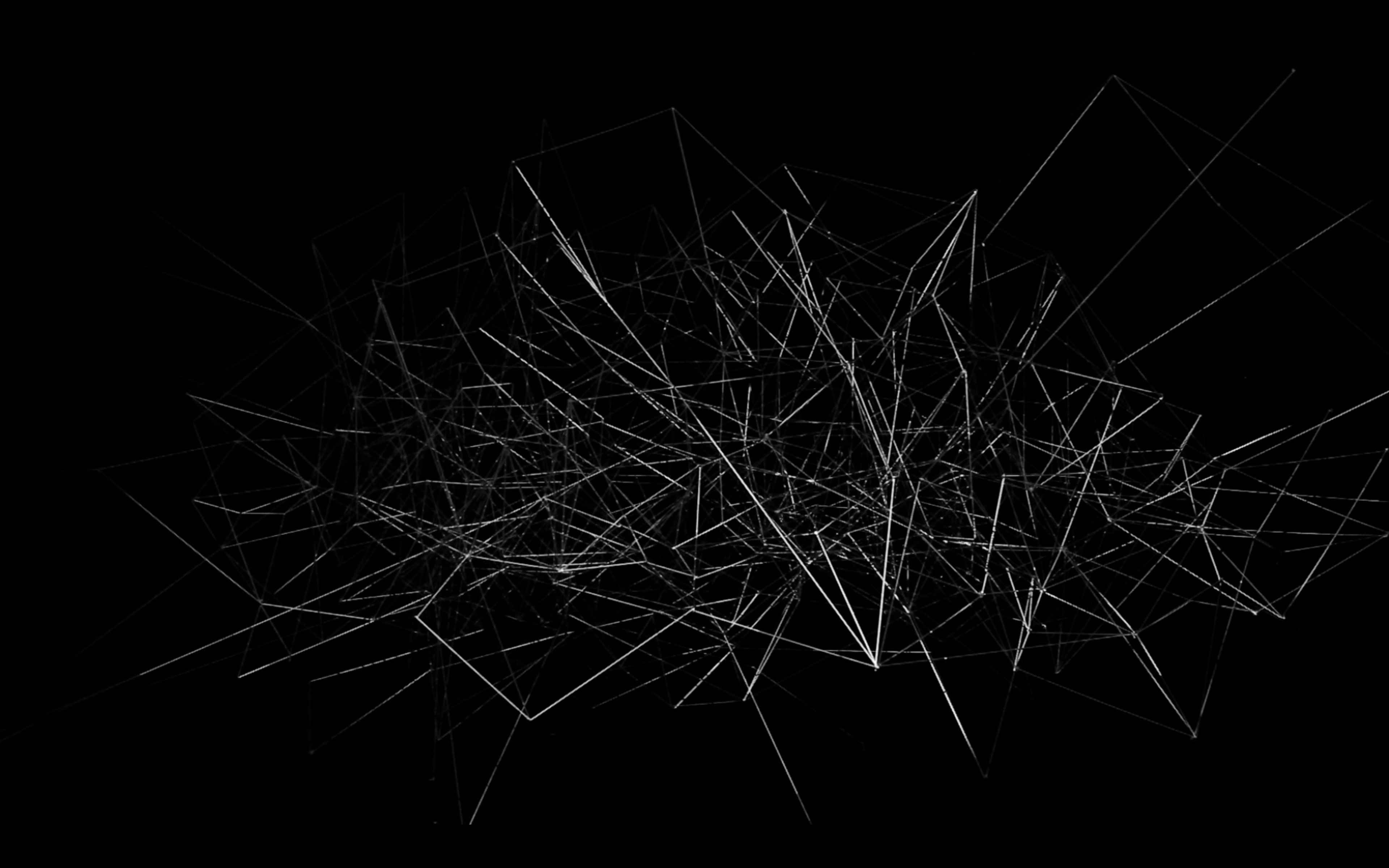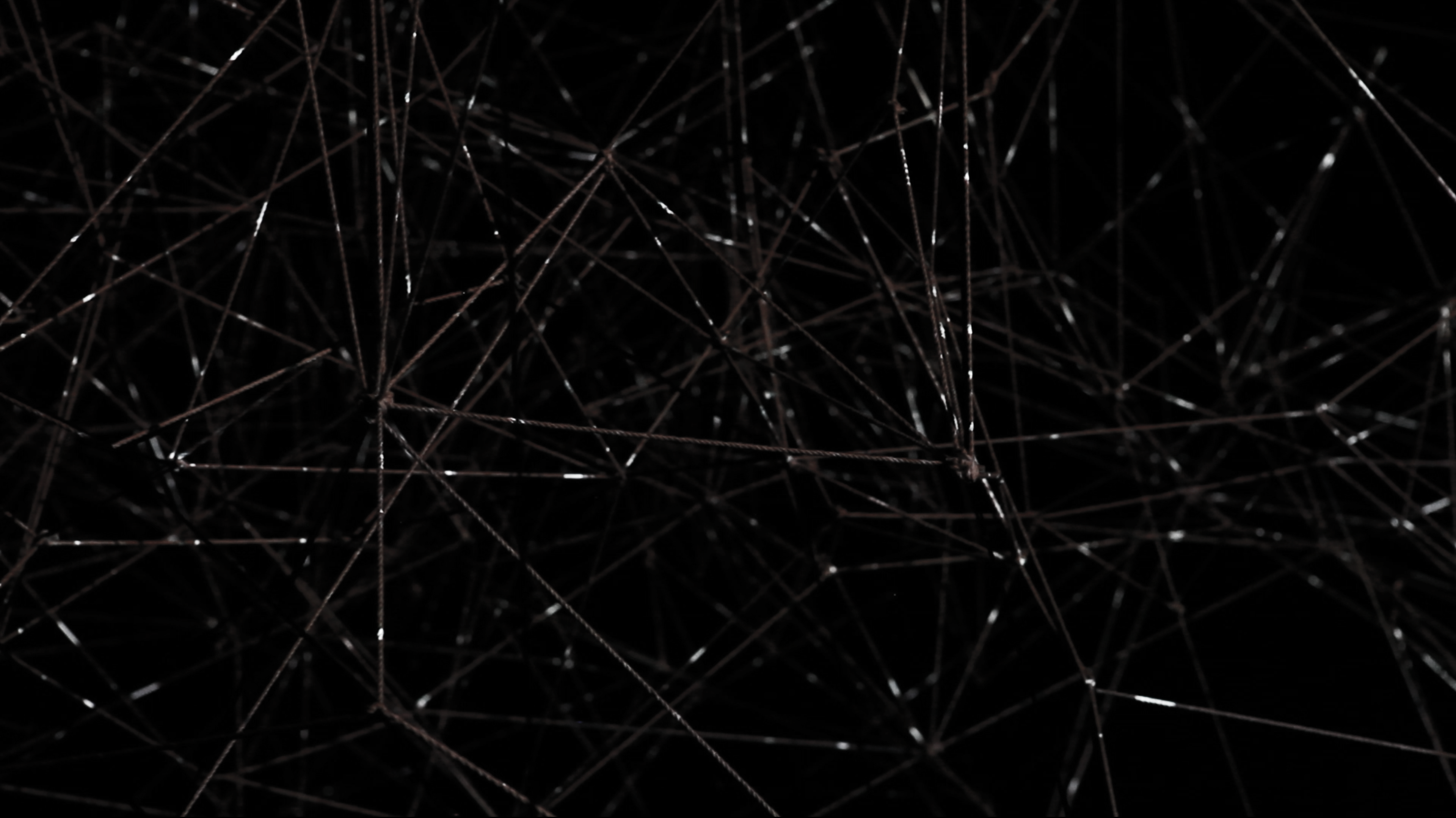Kimchi and Chips, a Seoul-based art duo acclaimed for their work with projection mapping, interactive objects, and 3D light, recently debuted their latest installation, Molecular Cloud. A notable project at this year's Scopitone Festival in Nance, France, the work fuses the web of evolving, geometric light found in the duo's 2013 Line Segment Space installation with the science of vast, dim molecular clouds—the network of galactic filaments where stars are born.Acclaimed projection mapping, interactive objects, and 3D light art duo Kimchi and Chips recently debuted their latest installation, Molecular Cloud. A notable project at this year's Scopitone Festival in Nance, France, the work fuses the web of evolving, geometric light found in the duo's 2013 Line Segment Space installation with the science of vast, dim molecular clouds—giant, filamentous "stellar nurseries" from which stars are born.As Kimchi & Chips' Elliot Woods told The Creators Project, when visitors enter a large room, it's so dark that they are unable to see their feet. As their eyes adjust, they begin to focus on the far end of the room where a dense web of 3-4mm thick nylon/cotton strings “hangs in the air.”"This web is constructed from a multitude of straight sections, tessellating [tiling] the air with polygons and line sections, spanning the depth of the space,” said Woods. “The shape has its own gravity, forming itself around the complex cloud of its own mass.” According to Woods, light begins to course through the web. Initially, a set of shockwaves travel through the network of strings, igniting the web's inner filaments, and creating the backbone of the installation's activity. Then, a wave of noise ripples across the web, followed by a vector field that uses the position and direction of the strings to mark the fluid motion that spreads through the web. Finally, a star-field arrives, with each star growing toward the web's nodes.
According to Woods, light begins to course through the web. Initially, a set of shockwaves travel through the network of strings, igniting the web's inner filaments, and creating the backbone of the installation's activity. Then, a wave of noise ripples across the web, followed by a vector field that uses the position and direction of the strings to mark the fluid motion that spreads through the web. Finally, a star-field arrives, with each star growing toward the web's nodes. Woods cited Herschel Space Observatory's research into molecular clouds as a major conceptual inspiration. Using infrared photography, HSO can probe deeply into the inner workings of molecular clouds. Inside these galactic phenomena lie filamentous structures where, as Woods noted, “matter gathers into strands before it collapses into thousands of stars.”As Woods explained, Kimchi and Chips' Molecular Cloud grew out of a series of discussions he and partner Mimi Son had with astrophysicist Vincent Minier, coordinator of the ExplorNova research project. ExplorNova attempts to fuse digital art and space science to invent new tools for scientific research. “We all realized the commonalities between this galactic mechanism and the artwork Line Segments Space,” he said. “We were compelled by this natural geometry, how it was an implicit result of dust and gravity. It draws parallels to the artistic process; discovering something unexpected, and that discovery becoming fundamental to your new understanding.”Though they initially simulated Molecular Cloud's look with a CAD package, Woods said the final construction was unscripted. Woods and San worked in the space with string material in hand. Black strings were used to create construction points wherever the white string had to stop mid-air. After adding the final touches of construction, Woods and San scanned their filament web using video projectors and a DSLR camera. This scan gave them the 3D topology of the filament network.
Woods cited Herschel Space Observatory's research into molecular clouds as a major conceptual inspiration. Using infrared photography, HSO can probe deeply into the inner workings of molecular clouds. Inside these galactic phenomena lie filamentous structures where, as Woods noted, “matter gathers into strands before it collapses into thousands of stars.”As Woods explained, Kimchi and Chips' Molecular Cloud grew out of a series of discussions he and partner Mimi Son had with astrophysicist Vincent Minier, coordinator of the ExplorNova research project. ExplorNova attempts to fuse digital art and space science to invent new tools for scientific research. “We all realized the commonalities between this galactic mechanism and the artwork Line Segments Space,” he said. “We were compelled by this natural geometry, how it was an implicit result of dust and gravity. It draws parallels to the artistic process; discovering something unexpected, and that discovery becoming fundamental to your new understanding.”Though they initially simulated Molecular Cloud's look with a CAD package, Woods said the final construction was unscripted. Woods and San worked in the space with string material in hand. Black strings were used to create construction points wherever the white string had to stop mid-air. After adding the final touches of construction, Woods and San scanned their filament web using video projectors and a DSLR camera. This scan gave them the 3D topology of the filament network. We do a manual touch-up where we clean the data coming out of our string recognition algorithm, then export a table of strings to use in the content application,” Woods said. “At this point, each string has a start and end point in 3D space, and a start and end point in the 2D space of a projector. In the final stage, we animate the string web with the projection by creating graphical programs which interpret the string data into motion and simulations.”
We do a manual touch-up where we clean the data coming out of our string recognition algorithm, then export a table of strings to use in the content application,” Woods said. “At this point, each string has a start and end point in 3D space, and a start and end point in the 2D space of a projector. In the final stage, we animate the string web with the projection by creating graphical programs which interpret the string data into motion and simulations.” Perhaps the coolest thing about Molecular Cloud is that it need not be limited to galleries, festivals, and scientific research facilities. With its fusion of technology, science, and digital art, it could lay the groundwork for art installations that teach kids and adults alike about the science of the universe.
Perhaps the coolest thing about Molecular Cloud is that it need not be limited to galleries, festivals, and scientific research facilities. With its fusion of technology, science, and digital art, it could lay the groundwork for art installations that teach kids and adults alike about the science of the universe. Click here to check out more of Kimchi and Chips' work on The Creators Project.Related:3D 'Air Drawing' Produces Lunar Long Exposure PhotographsArchitectural Web Of Threads Gets Irradiated In Remarkable Audio-Visual InstallationExploring The Beauty Of A Work In Progress
Click here to check out more of Kimchi and Chips' work on The Creators Project.Related:3D 'Air Drawing' Produces Lunar Long Exposure PhotographsArchitectural Web Of Threads Gets Irradiated In Remarkable Audio-Visual InstallationExploring The Beauty Of A Work In Progress
Advertisement

Advertisement

Advertisement


